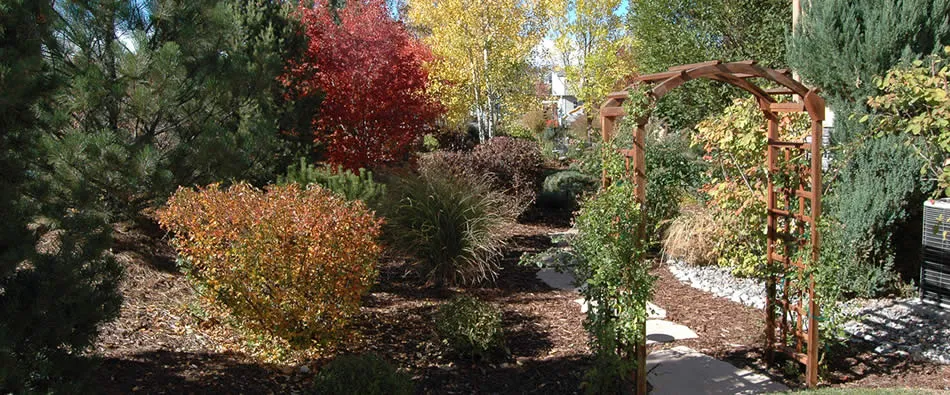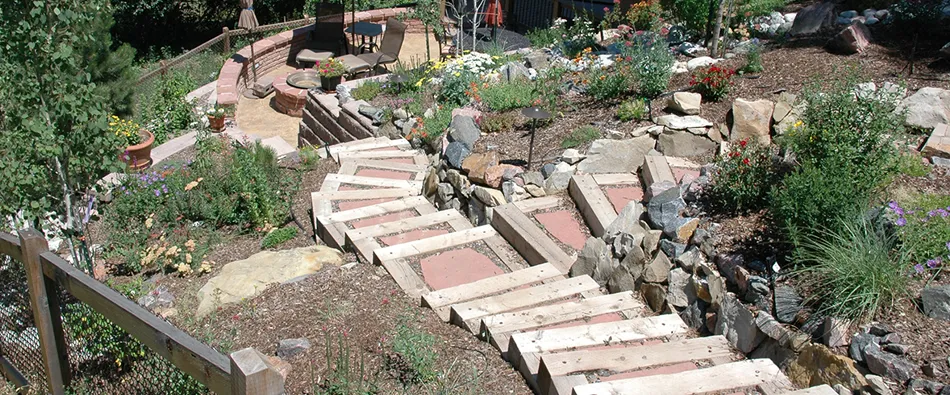Xeriscaping (often incorrectly spelled zero-scaping or xeroscaping) is landscaping and gardening that reduces or eliminates the need for supplemental water from irrigation.
Xeriscaping refers to the conservation of water through creative landscaping.
Originally developed for drought-afflicted areas, the principles of xeriscape today have an ever-broadening appeal. With water now considered an expensive and limited resource, all landscaping projects, residential or commercial, can benefit from this alternative.
Xeriscapes do not have a single look - almost any landscaping style can be achieved. The principles can be applied to all or part of a yard, in any geographic region of North America.
Xeriscape Benefits
Saves Water. For most of North America, over 50% of residential water used is applied to landscape and lawns. Xeriscape can reduce landscape water use by 50 - 75%.
Less Maintenance. Aside from occasional pruning and weeding, maintenance is minimal. Watering requirements are low, and can be met with simple irrigation systems.
No Fertilizers or Pesticides. Using plants native to your area will eliminate the need for chemical supplements. Sufficient nutrients are provided by healthy organic soil.
Improves Property Value. A good Xeriscape can raise property values, which more than offset the cost of installation. Protect your landscaping investment by drought-proofing it.
Pollution Free. Fossil fuel consumption from gas mowers is minimized or eliminated with minimal turf areas. Small turf areas can be maintained with a reel mower.
Provides Wildlife Habitat. Use of native plants, shrubs and trees offer a familiar and varied habitat for local wildlife.
Xeriscaping has been embraced in dry regions of the western United States. Prolonged droughts have led water to be regarded as a limited and expensive resource. Denver, Colorado, was one of the first urban areas to support xeriscaping. That citys water department encouraged residents to use less of the city's drinkable water for their lawns and gardens.
Xeriscaping has become widely popular in some areas because of its environmental and financial benefits. The most important environmental aspect of xeriscaping is choosing vegetation that is appropriate for the climate. Vegetation that thrives with little added irrigation is called drought-tolerant vegetation. Xeriscaping often means replacing grassy lawns with soil, rocks, mulch, and drought-tolerant native plant species. Trees such as myrtles and flowers such as daffodils are drought-tolerant plants.
Plants that have especially adapted to arid climates are called xerophytes. In desert areas like Phoenix, Arizona, xeriscaping allows gardeners to plant native xerophytes such as ocotillo.
Supporters of xeriscaping say it can reduce water use by 50 or 75 percent. This saves water and money. In Novato, California, residents were offered conservation incentives (reductions in their water bills) to convert from traditional lawns to xeriscaping. The citys water department estimated that the houses that chose xeriscaping saved 120 gallons of water a day.
Another main component of xeriscaping is installing efficient irrigation methods. Drips and soaker hoses direct water directly to the base of the plant and prevent the water evaporation that sprinklers allow. More efficient irrigation is also achieved when types of plants with similar water needs are grouped together. A xeriscaped landscape needs less maintenance than an area landscaped with grass and water-intensive plants.
Drought-Tolerant Plants
The most common example of a xeriscape-friendly plant is the cactus, which has hundreds of different species that are native to North and South America. Cacti have evolved many physical adaptations that conserve water. For example, their prickly spines, the cactus version of leaves, protect the plants from water-seeking animals. Their large, round stems have thickened to store large amounts of water. Their waxy skin reduces water lost to evaporation.
Cacti are far from the only plants appropriate for xeriscaping. Other drought-resistant plants include agave, juniper, and lavender. Many herbs and spices are used in xeriscaping, such as thyme, sage, and oregano. Some plants used for food are drought-resistant, such as black walnuts, Jerusalem artichokes, and sapodilla, a sweet fruit native to Mexico.
Denver, Colorado






